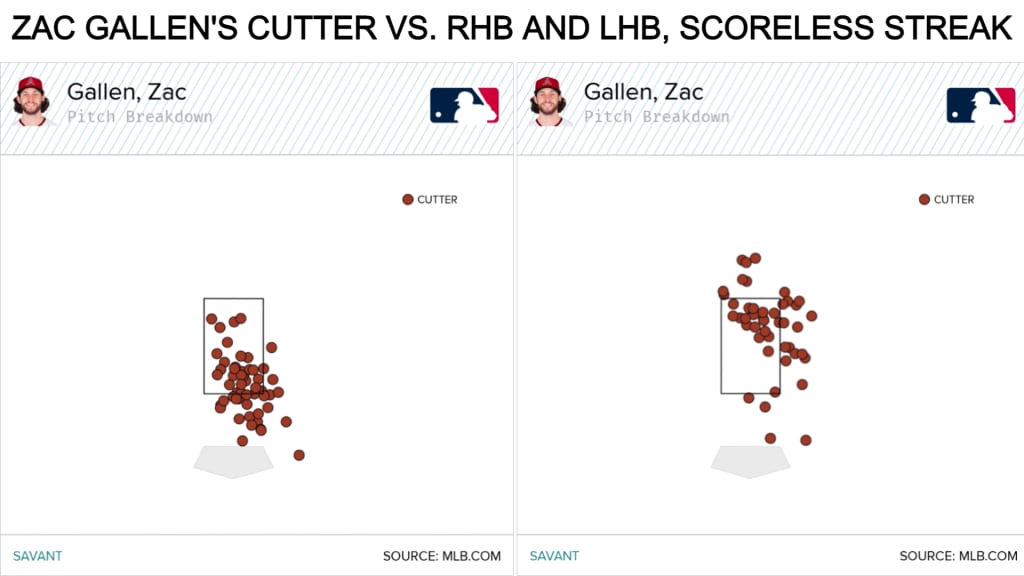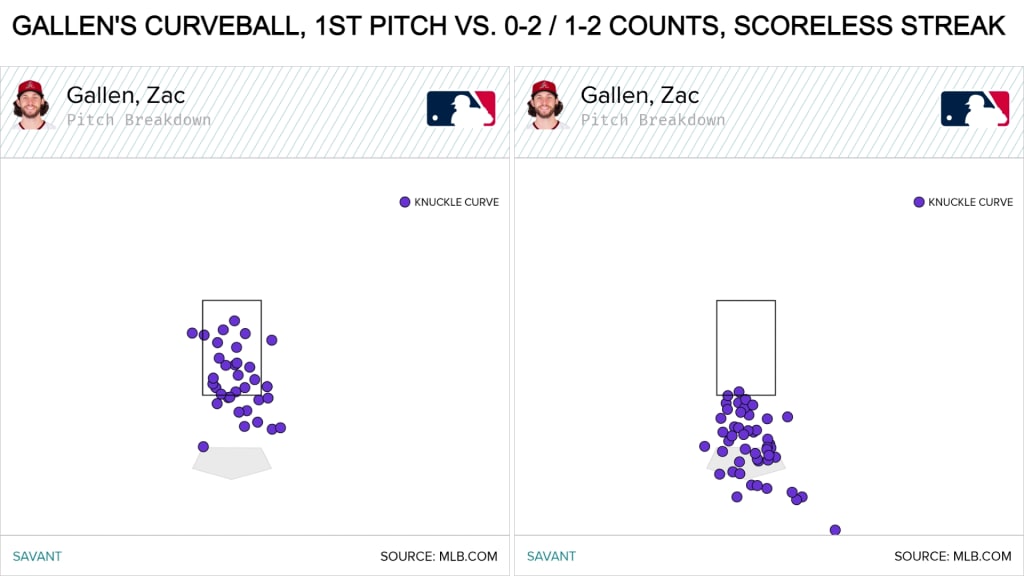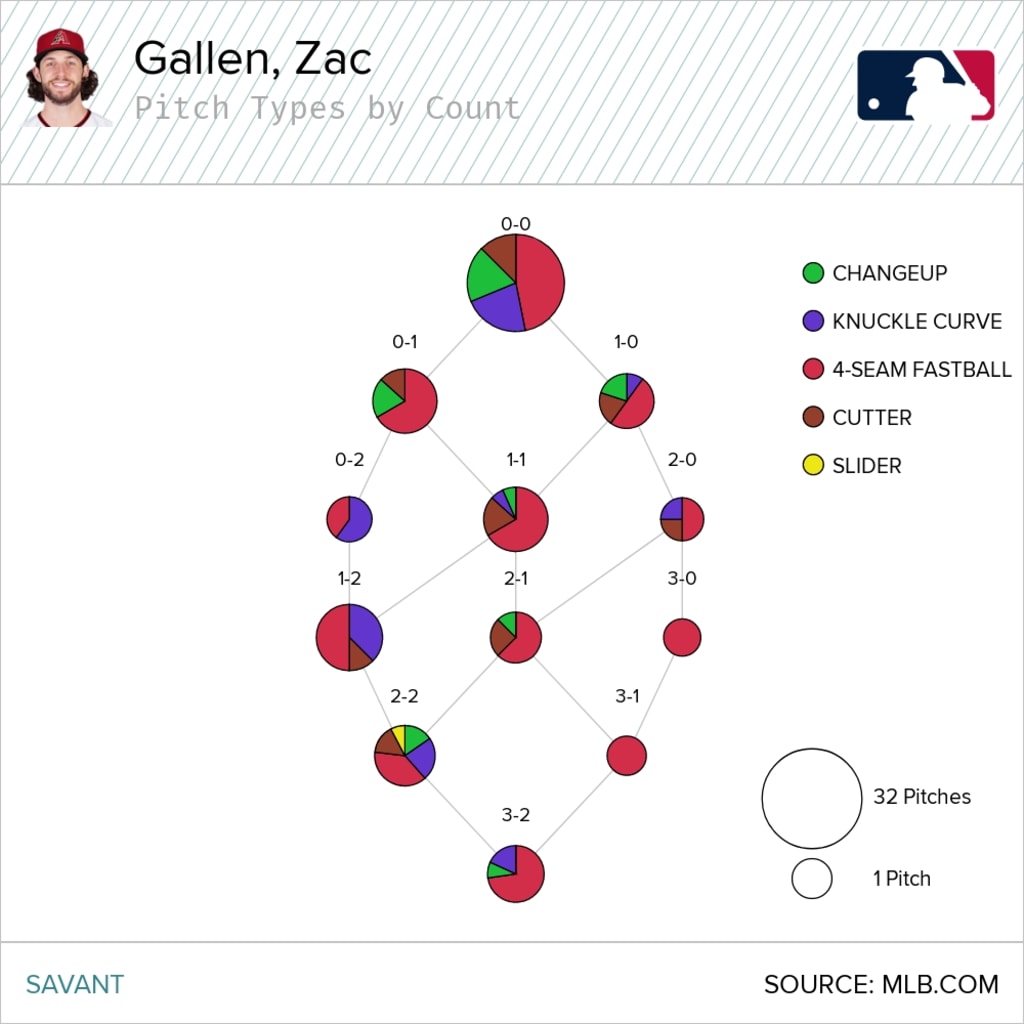The pitcher with the longest scoreless-innings streak in seven years doesn't have exceptional velocity, or spin, or movement. So how is Zac Gallen doing it?
The D-backs' ace has to be doing something right, since he hasn't allowed a run in 41 1/3 innings entering his start Sunday against the Rockies, the longest streak since Zack Greinke's in 2015. (The last run Gallen surrendered came on a Luke Maile RBI double against Cleveland on Aug. 2.)
What Gallen does do is tailor his arsenal to the hitter, the situation, the point in the game. He's great at using different looks to get the most outs out of his repertoire.
Here are three key ways Gallen has mixed up his stuff to run his scoreless streak to six straight starts.
• The cutter you see as a right-handed hitter isn't the same cutter you see as a left-handed hitter.
Gallen's cutter has been a much more important part of his repertoire this season than last season, which makes 2022 look more like his breakout 2020 season with Arizona.
The cutter's not a big swing-and-miss or strikeout pitch, but Gallen gets a lot of outs with it -- during his scoreless streak, which goes back to Aug. 8 against the Pirates, he's gotten more outs with his cutter than any other secondary pitch, just more than his knuckle-curve and changeup.
The way he gets all those outs is by attacking righties one way with the cutter, and lefties another way.

Against right-handed hitters, he throws the cutter to the low-outside corner, more like a slider. That means righties have to deal with a pair of pitches that break away from them down in the zone, Gallen's cutter and his knuckle-curve.
Against left-handed hitters, he throws the cutter up and in, so it's like an elevated fastball, but one that gets in more on the hitter's hands. That means lefties have to cover the full range of the strike zone because Gallen has pitches that break to the opposite corners -- cutters running in to the top-inside corner, changeups fading to the low-outside corner.
• The curveball you see on the first pitch isn't the same curveball you see on the last pitch.
Gallen has two uses for his curveball, too. He can use it to get a strike, or he can use it to get a strikeout.
He likes to throw his curve to put the hitter away with two strikes. About half of his 0-2 and 1-2 pitches during his scoreless streak have been knuckle-curves.
But he also likes to throw his curve to get ahead of a hitter. During the streak, he's started off about a quarter of the batters he's faced with a curveball.
Gallen can do both because he knows how to locate. He keeps the early-count curveballs in the zone, and he buries the two-strike curveballs.

• The break-heavy pitch mix you see in the first inning isn't the same as the fastball-first pitch mix you see in the seventh.
All six of Gallen's scoreless starts have gone at least six innings, and in five of the six, he's worked at least seven. That means he's seeing hitters several times a game, and successfully getting them out several times a game.
The first two times through the order, he keeps a consistent approach: about 45% four-seamers, 25% curves, 20% cutters and 10% changeups.
But facing down those same hitters for the third time late in a game, he attacks them with his fastball. The third time through the order, Gallen's four-seam usage jumps 10 percentage points, to over 55%. And he's not afraid to throw an elevated fastball right by a big slugger.
He'll still mix in a first-pitch curveball, cutter or changeup to pitch backwards, and drop a hammer curveball to go for the strikeout if he gets ahead. But the rest of the time, he's attacking.

And with the way he can spot up his fastball, that makes late-game Gallen effective in his own way, too.
